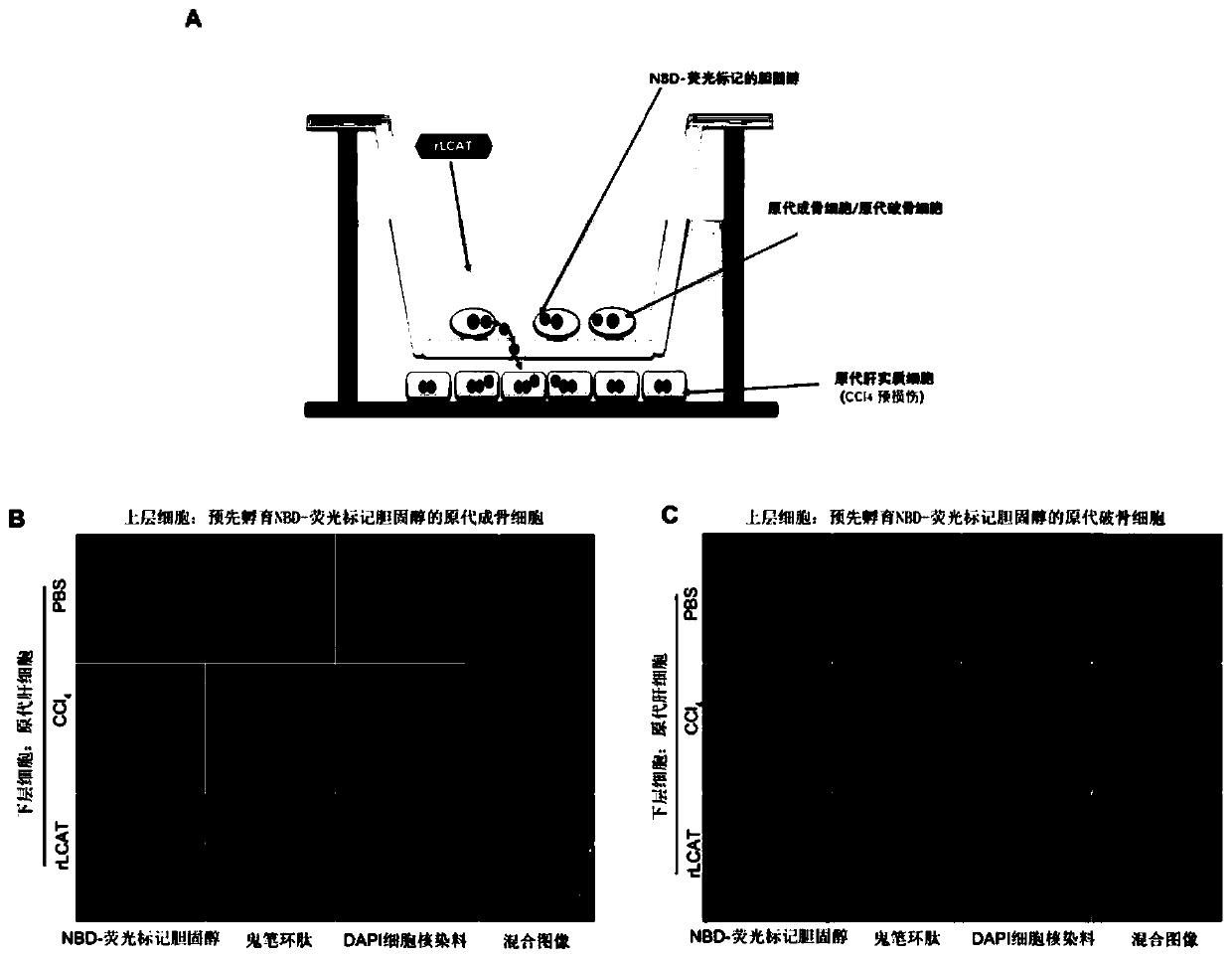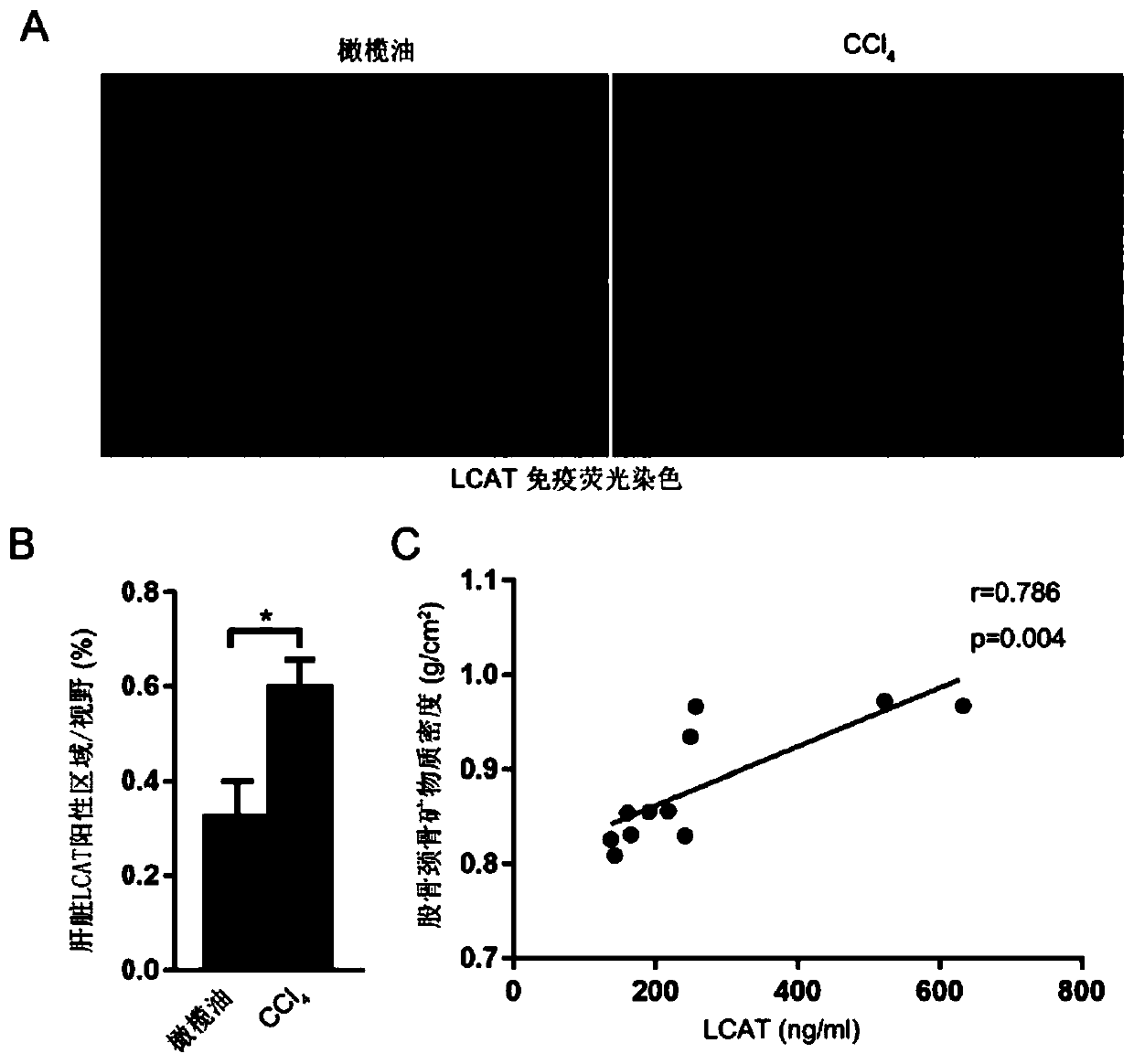Use of lcat in the preparation of medicines for treating and/or preventing hepatic bone disease
A technology of uses and drugs, applied in the directions of drug combinations, bone diseases, biochemical equipment and methods, etc., to achieve the effect of preventing and treating hepatic bone diseases, broadening the field of choice, and alleviating osteoporosis
- Summary
- Abstract
- Description
- Claims
- Application Information
AI Technical Summary
Problems solved by technology
Method used
Image
Examples
Embodiment 1
[0024] Example 1. Construction of primary osteoblast / primary osteoclast and primary liver parenchymal cells co-culture system
[0025] Implementation method: Add the isolated primary osteoblasts / primary osteoclasts into a microporous filter culture chamber (MerckMillipore, USA), add NBD fluorescently labeled cholesterol and incubate for 24 hours, then wash off the unphagocytosed cells with PBS solution. NBD fluorescently labeled cholesterol outside primary osteoblasts / primary osteoclasts. The primary hepatic parenchymal cells were transferred to the lower layer of the microporous membrane culture chamber. According to different treatments, the microporous membrane culture chamber system was divided into three groups, namely, PBS treatment group, exogenous rLCAT treatment group (100ng / ml), CCl4 pre-injured liver parenchymal cell group (1mM), and the treatment methods were as follows:
[0026] PBS treatment group: PBS solution was added to both the upper layer cells and the low...
Embodiment 2
[0031] Example 2. The expression of LCAT in mice with hepatic bone disease and the relationship between the expression of LCAT and bone mineral density in patients with hepatic bone disease
[0032]In order to verify the expression of LCAT in mice with hepatic bone disease and whether there is a certain relationship between the expression of LCAT and bone mineral density in patients with hepatic bone disease, we constructed a mouse model of hepatic bone disease and collected hepatic bone disease Patient serum and measured bone density data.
Embodiment approach
[0033] Implementation method: 1. Select 8-week-old female mice (C57BL / 6) and divide them into two groups, namely the hepatic bone disease group and the control group, with 6 mice in each group. The mice in the hepatic bone disease group were intraperitoneally injected with CCl for 46 weeks (the injection frequency was 2ul per gram of body weight every two days), and the mice in the control group were injected with olive oil (the injection frequency was the same as that of the hepatic bone disease group). After 6 weeks, the liver and serum of the two groups of mice were collected.
[0034] 2. The obtained hepatic bone disease model mouse liver was sectioned and then subjected to LCAT immunofluorescence staining. The LCAT protein was labeled with PE fluorescein, and the nuclear protein was labeled with DAPI, which showed red light and blue light under excitation light of 592nm and 358nm, respectively. 3. Select 8 slices for each group, take 10 pictures for each slice at 100x mag...
PUM
 Login to View More
Login to View More Abstract
Description
Claims
Application Information
 Login to View More
Login to View More - R&D
- Intellectual Property
- Life Sciences
- Materials
- Tech Scout
- Unparalleled Data Quality
- Higher Quality Content
- 60% Fewer Hallucinations
Browse by: Latest US Patents, China's latest patents, Technical Efficacy Thesaurus, Application Domain, Technology Topic, Popular Technical Reports.
© 2025 PatSnap. All rights reserved.Legal|Privacy policy|Modern Slavery Act Transparency Statement|Sitemap|About US| Contact US: help@patsnap.com



